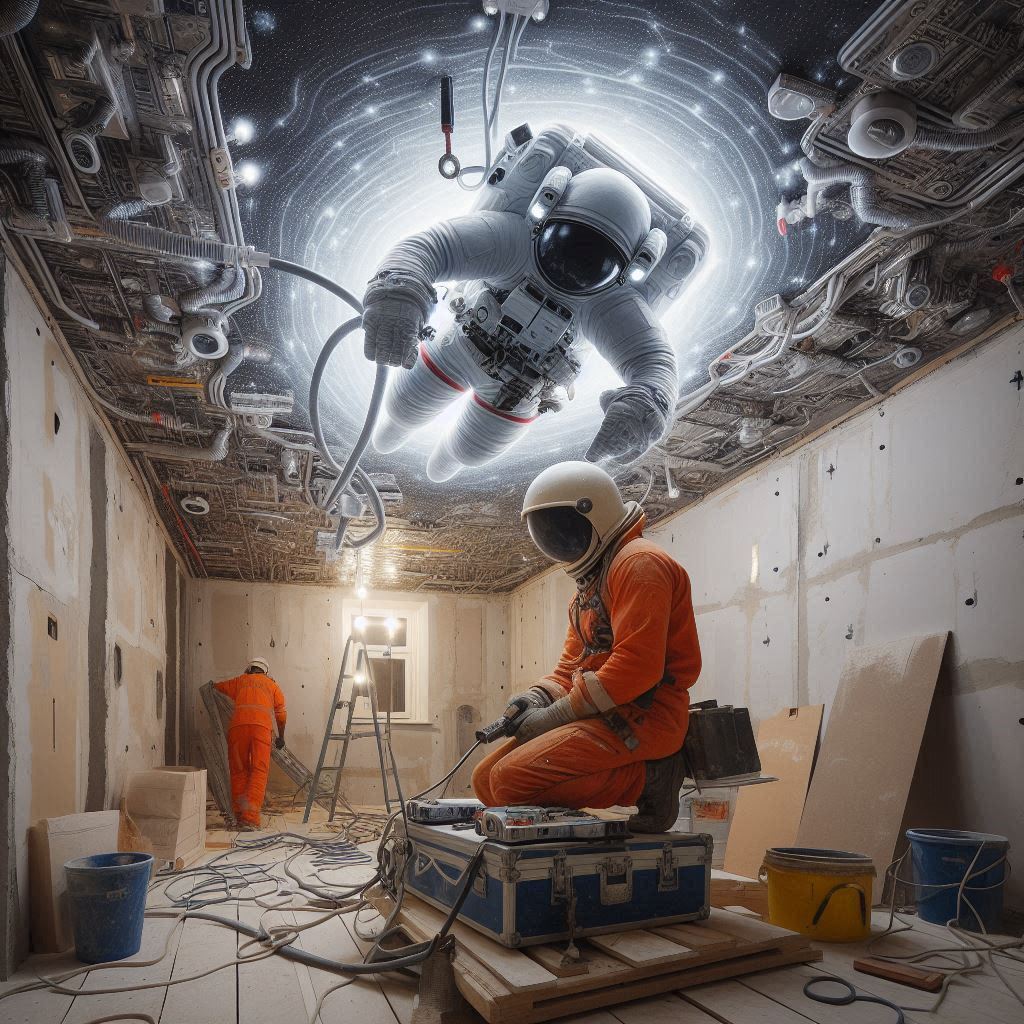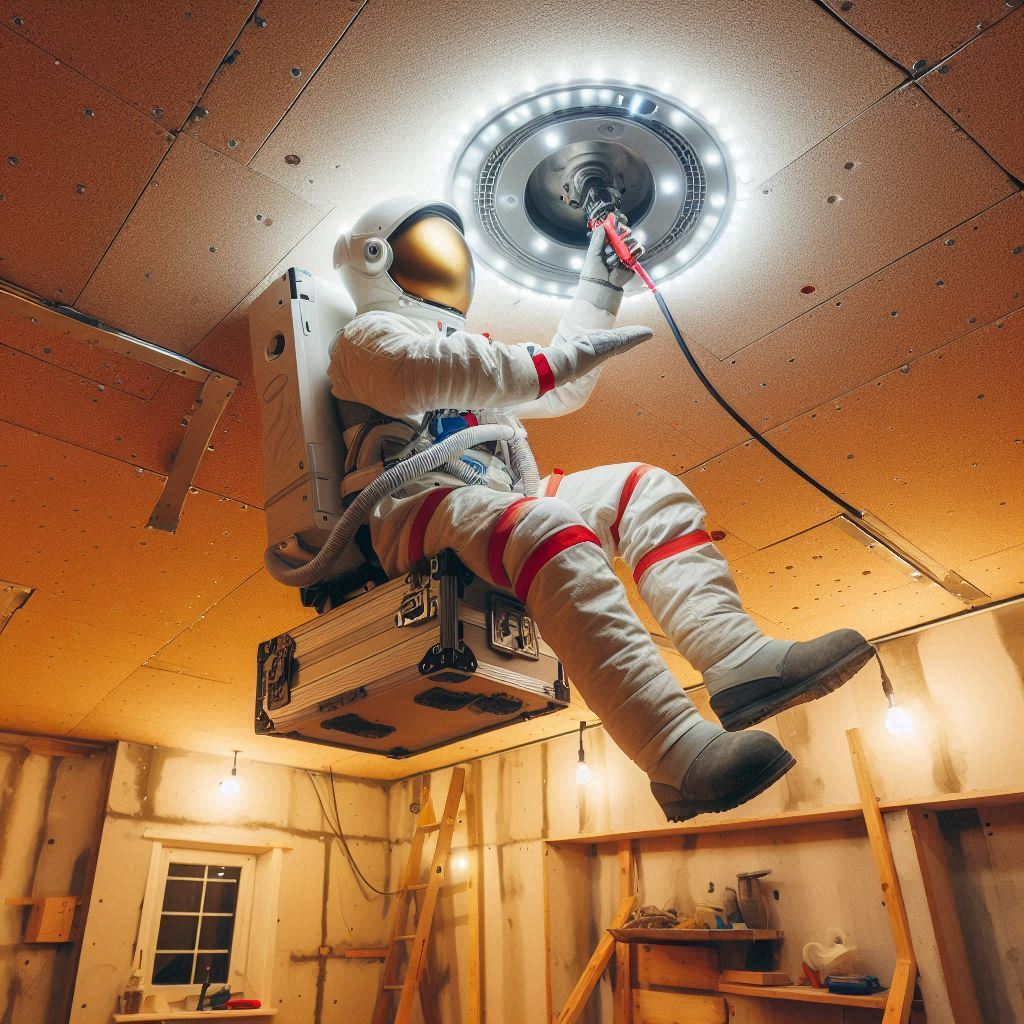The illuminated plasterboard ceiling is a modern and stylish solution that can transform any interior. Such a ceiling not only improves the aesthetic perception of the room, but also allows you to hide the shortcomings of the main ceiling, hide communications and create a unique atmosphere with the help of built-in lighting. In this article, we will look in detail at all the stages of installing a ceiling made of GKL with lighting, the necessary materials and tools, as well as give useful tips and recommendations.

Preparing for ceiling installation
Selection of materials and tools
Before starting work, it is important to choose the right materials and tools. For installation of a ceiling from GKL with illumination you will need::
- Drywall sheets (GKL). It is recommended to use moisture-resistant sheets for rooms with high humidity.
- Profiles. Guide rails and rack profiles for creating the frame.
- Suspensions. For fixing profiles to the main ceiling.
- Self-tapping screws and dowels. For fixing GKL and profiles.
- Putty and tape for joints. For sealing joints between sheets.
- Lighting elements. LED strips, transformers, and controllers.
Required tools:
- Drill and screwdriver
- Drywall Cutting Knife
- Level and Roulette
- Spatulas and brushes
- Ladder or stepladder
Surface preparation
Before starting installation, it is necessary to prepare the surface of the main ceiling. Make sure it’s clean and dry, and remove old coatings if necessary. Mark the ceiling by defining the location of the profiles and LED strips.

Installation of the ceiling frame
Marking and installing guide profiles
- Markup. Use a level and tape measure to mark the walls and ceiling, indicating where the guide profiles are attached.
- Installing guide profiles. Attach the guide profiles around the perimeter of the room using dowels and self-tapping screws. Make sure that the profiles are installed evenly.
Installation of rack profiles and suspensions
- Marking of rack profiles. Mark the mounting points of the rack profiles on the ceiling. The recommended distance between profiles is 60 cm.
- Mounting of suspensions. Attach the suspensions to the main ceiling where the rack profiles are installed.
- Installation of rack profiles. Insert the rack profiles into the guides and secure them with self-tapping screws and suspensions. Check that the level of the frame is horizontal.
Installation of drywall sheets
Cutting and preparing sheets
- Cutting sheets. Measure the required dimensions of the drywall sheets and cut them off with a knife. Consider places for LED strips and other lighting elements.
- Preparing sheets. If necessary, remove the chamfers on the edges of the sheets to facilitate the sealing of joints.

Fixing the sheets to the frame
- Editing sheets. Attach the drywall sheets to the frame using self-tapping screws, placing them in 15-20 cm increments. Start editing from the corner of the room and move to the center.
- Sealing of seams. Fill the seams between the sheets with putty and apply reinforcing tape. After the putty dries, sand the joints to get a smooth surface.
Setting the backlight
Selection and preparation of LED strips
- Selection of LED strips. Determine the type and color of the LED strips that will be used for illumination. Consider the brightness and power consumption.
- Preparing your feeds. Cut the LED strips to the desired length and solder the wires to connect them to the transformer and controller.
Installation and connection of LED strips
- Installing tapes. Attach the LED strips to the drywall ceiling using special fasteners or double-sided tape.
- Enabling it. Connect the LED strips to the transformer and controller by following the manufacturer’s instructions. Check the operation of the backlight before finally sealing the wires.
Finishing works
Putty and painting
- Finishing putty. Apply a finishing coat of putty to the entire ceiling to create a perfectly smooth surface.
- Painting. Paint the ceiling with the selected paint. It is recommended to use a moisture-resistant paint for rooms with high humidity.
Installation of decorative elements
- Moldings and cornices. Attach decorative moldings and cornices around the perimeter of the ceiling for a complete look.
- Sockets and lamps. Install sockets and light fixtures in the designated locations.

Interesting facts and tips
Useful tips
- Use moisture-resistant drywall. Moisture-resistant drywall is better suited for kitchens and bathrooms, as it is resistant to moisture and mildew.
- Check all connections. Be sure to check the operation of all LED strips and electrical connections before sealing the wires and finishing them.
Interesting facts
- History of drywall. Drywall was invented in the United States in 1894 by Augustine Sackett and his son. The first patent for drywall was issued in 1910.
- Energy efficiency of LEDs. LED strips consume 80% less energy than traditional incandescent bulbs, making them an excellent choice for lighting applications.
“Details create perfection, and perfection is not a detail” – Leonardo da Vinci.
Table: Comparison of drywall types
| Drywall type | Advantages | Disadvantages | Application |
| Regular drywall | Affordable price, easy installation | Not resistant to moisture | Living rooms, bedrooms |
| Moisture-resistant drywall | Resistant to moisture and mildew | Higher cost | Bathrooms, kitchens |
| Fire-resistant drywall | Resistant to high temperatures | Higher cost | Premises with high security requirements |
Installing a GKL ceiling with lighting is a multi-step process that requires attention to detail and careful planning. Following our recommendations and step-by-step instructions, you will be able to do all the work yourself and create a stylish and functional ceiling that will delight you and your guests.
We hope that this article was useful and will help you in implementing your project. Good luck installing the ceiling and creating a cozy interior!